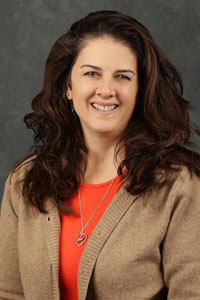The author and her husband, Duane, own and operate a 550-cow dairy in Cochranville, Pa.

No two dairy farms are the same, either. Unlike snowflakes, the idea that farms are different from each other is not mind boggling. I have seen this firsthand in enough ways that it is easy for me to accept.
It is the diversity in our farms that adds strength to our dairy stories in the United States. We do not have cookie cutter farms with the same of everything. There are differences in size, in style of milking system, in the cow breeds we milk, the color tractor we drive, and the list goes on and on.
There is also a lot of pride in what we do and the way we get our job done. Take the breed of cows we milk, for example. Farmers who milk Jerseys are convinced that they milk the best breed of all time. The dairy farmers who milk Holsteins think the same. Then there are farmers who like a bouquet of cows of different breeds.
We like to joke and jab each other that milking one kind of cow is better than the other. I have also been involved in conversations when the smack talk toward each other gets intense and farmers are not joking as much as they would like to seem. We take our decisions seriously.
The bottom line is that each dairy farmer is an independent businessman or woman, and we will all make decisions that are best for our farm. Duane and I both grew up milking registered Holsteins, and we have our personal and business reasons for sticking it out with our black and whites.
When our children were in 4-H and showing cows, the grass looked greener on the other side, and Kacie and Robert decided they wanted to show something besides a Holstein. We talked through the pros and cons and in the end, they won out and we added a Jersey calf and Brown Swiss calf to our herd.
The detour into these colored breeds lasted throughout their involvement in the 4-H program, but when they were done with their endeavors, we were done milking Jerseys. I have nothing against the breed, but they just do not work for our farm.
For starters, our parlor stalls are set for long and large Holsteins. A small Jersey has an advantage when it gets in the milking parlor — if it wiggles, squirms, and squishes enough, the cow can turn itself around to get a different view of the parlor. Our employees were not fond of returning the whole parlor group to accommodate the little brown ones, no matter how adorable they claim to be.
Then there is herd size. When my grandmother was milking her Guernseys before and after school, she and her brothers milked 40 cows by hand. That was a large herd in those days, but they had a large family and I guess Pop Kennel wanted to keep them busy.
My father milked 50 cows or more, and when Duane and I started farming with his parents, we went from 60 to 80 cows in a tie stall barn. Then we built a freestall barn with a parlor, and now we are now milking around 800.
The herd size is constantly changing and is never the same as our neighbors. There are reasons why we have made our decisions. Some of those calls were made from what we gleaned from other farmers. Some were made by our own gut feelings.
Like other farmers, we are independent in making our farm’s decisions. We make conclusions based on research, financial reasons, and because it is what works for our dairy. For the same reasons, our neighbors make their own evaluations.
Quite frankly, if every farm were the same, it would be a bit boring. A highlight for us is to visit other farms, read articles that showcase dairy operations, and meet farmers from all corners of this country. There is a great opportunity to learn from others. Lessons gleaned from other farms does not make us the same; it makes our farms more exceptional.
I hope we can always hold on to our uniqueness. I have a friend who started making cheese a few years ago. Her decision to add a delicious twist to their farm has been paramount for their family business. Every year they make changes for their farm. They have my vote for the best blue cheese around town. Their determination and consideration have put Birchrun Hills Farms on the map in big, cheesy ways.
My friend, Stan Erwine at Dairy Management Inc., says, “When you visit one farm in the United States, you visit one farm.” His point is that no two farms are the same.
That is a strength for us in this country. Having family-owned farms come in so many shapes, sizes, and styles makes our industry strong and vibrant. It means we have great stories to tell and guarantees we will stay unique, like snowflakes.









